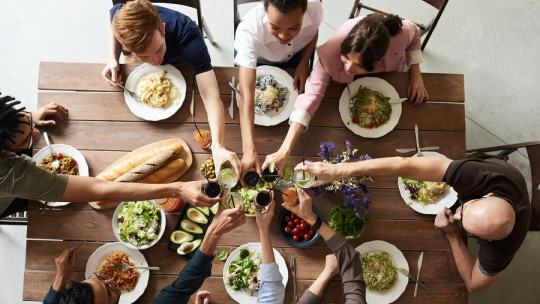Human beings are social animals. This implies having to interact frequently with other people, although it is true that this need is more intense in some cases (very social people) and less in others.
Despite the importance of this social element in a person’s life, it is a reality the absence of structured learning of social skills within school environments. Thus, the chance that will place the boy or girl in a specific context and family will mean that there will be more or less skillful models from a social point of view from which to learn.
If we have skillful examples from an early age, the probability of learn and replicate those skills with our behaviors in adulthood. The same will happen but in the opposite direction in the event that such references do not exist.
Styles of social behavior
Traditionally, there has been talk of four large blocks or styles of behavior within the social sphere. These are the following:
1. Assertive or socially skilled style
It consists of the ability to express opinions, feelings and desires without threatening or punishing others and without violating the rights of those people. This style favors not only respect for one’s own rights but also for the rights of others. Knowing how to say no appropriately without feeling guilty complaining about what we have paid for or knowing how to handle pressure from another person are some examples of assertive behavior.
2. Passive or Inhibited Style
In this case we would speak of a transgression of one’s own rights by not being able to openly express opinions (especially when they are contrary to the rest), feelings, and thoughts or by expressing them in a self-defeating manner, with a lack of confidence or even with apologies for fear of rejection or that others may not pay attention or form a negative idea of the person.
It is important to note that this style It is related to one’s own lack of respect for oneself since on many occasions, achieving legitimate objectives is renounced by avoiding conflicts at all costs.
3. Aggressive Style
It consists of the defense of personal rights and the expression of thoughts, feelings and opinions in an inappropriate and imposing manner, something that usually provokes the violation of the rights of other people
It is relevant to point out that aggressive behavior can be shown both directly with the person or group of people themselves, and indirectly, that is, by “messing around” through third parties. Likewise, aggressiveness can be verbal or non-verbal through physical violence.
4. Passive-Aggressive Style
Consists of the combination of passive and aggressive style Thus, in a first phase the person adopts a passive role where, consciously or unconsciously, pressure accumulates that ends up “coming out” through the aggressive style (“the straw that breaks the camel’s back”).
Why do we sometimes find it difficult to say “No”?
It must be clarified that we normally oscillate between one style and another, that is, we are not passive, aggressive, passive-aggressive or assertive in one hundred percent of the situations, but rather we oscillate depending on the context and person or people with whom we interact. (it is more likely to be aggressive with our mother than with our boss…).
- For feeling shame or guilt when opposing an opinion, request, etc.
- Specifically, for thinking that not being assertive in that situation is the best option, something that in many situations implies assertion.
How to say “no” without feeling guilty
To know how to communicate your own motivations assertively, it is best to be guided by the following keys.
1. Recognize the right to say no
If we do not manage to complete this first step, it will be very difficult to be assertive. To do this, we have to accept that human beings have a series of basic rights, including being able to say No.
2. Thinking that we are not being selfish
In the same way that the other person has the right to ask me for something and not be selfish, I also have the right to say No appropriately without feeling guilty.
3. Accept the fact that you can’t please everyone
Sometimes our behavior will please other people but other times it won’t. Accepting this fact as something natural will make us stronger in the social and personal sphere.
4. Stay safe when expressing yourself
When expressing what you think, do it calmly without mincing words and in a way that is respectful of the other person.
In summary, we are talking about an important skill that requires some daily training. Like all training, it’s about going little by little. We can go from less to more, that is, be assertive in non-committal situations with the aim of achieving confidence and security that later allows us to move towards more difficult objectives for us. Shall we start today?
- Caballo, VE Manual for the evaluation and training of social skills. 2005. 21st century publishing house.









